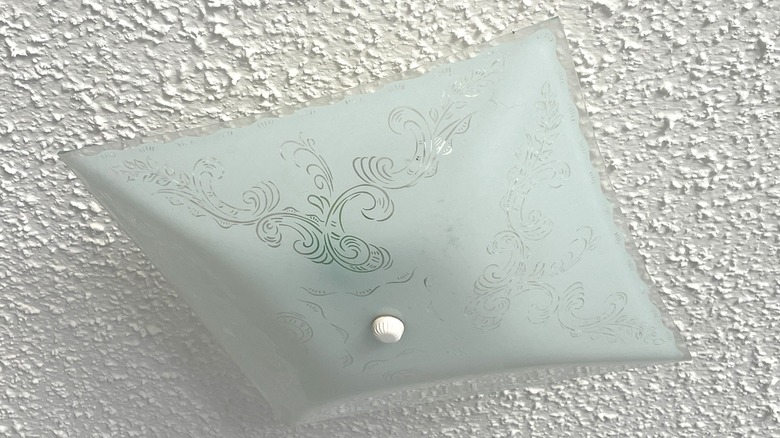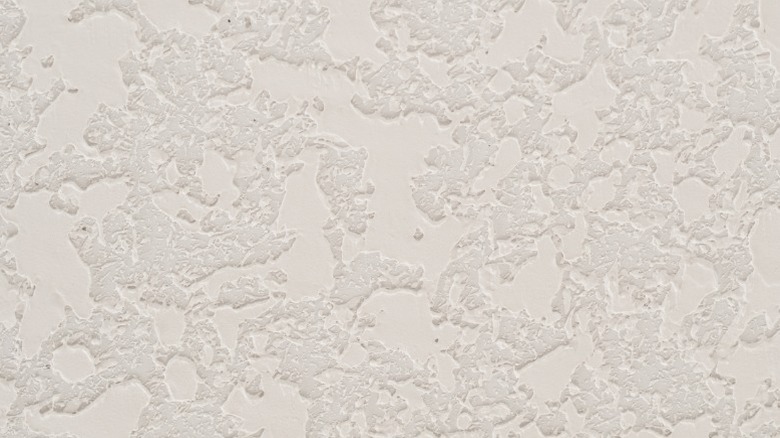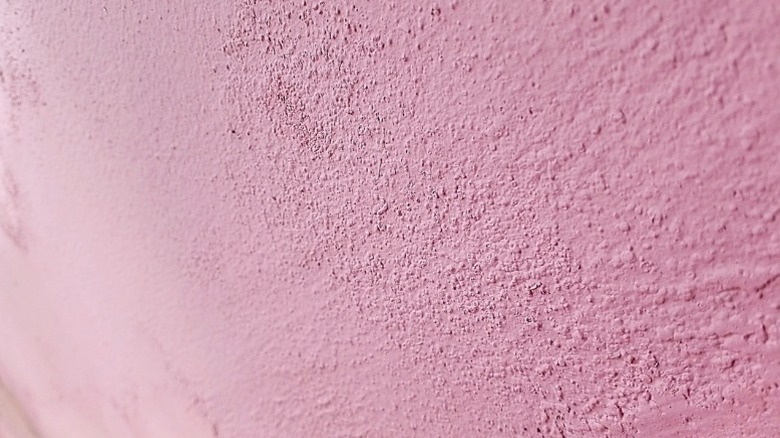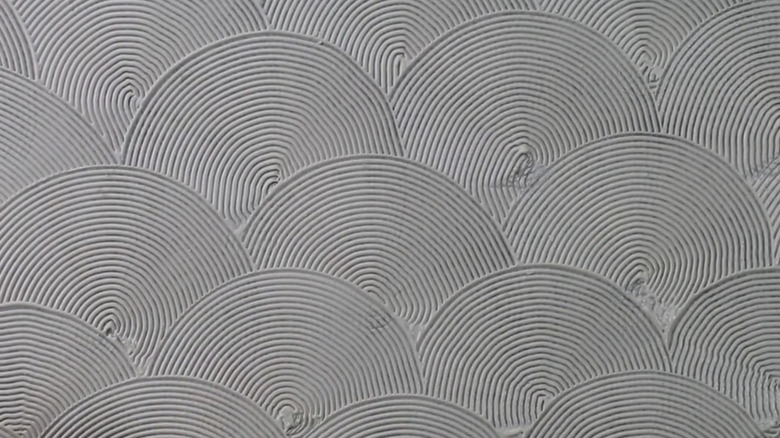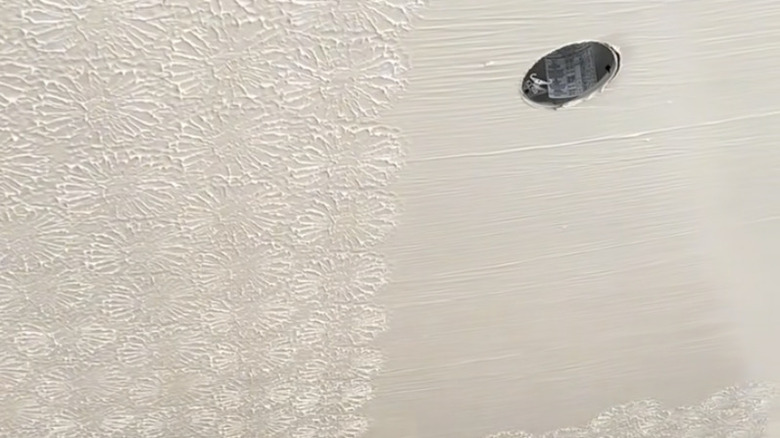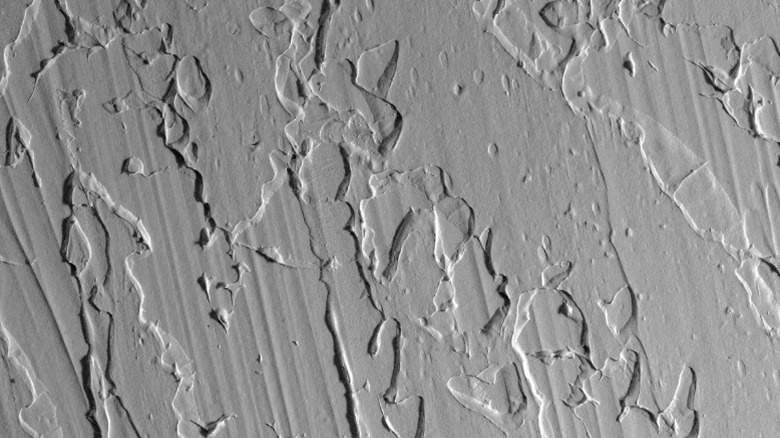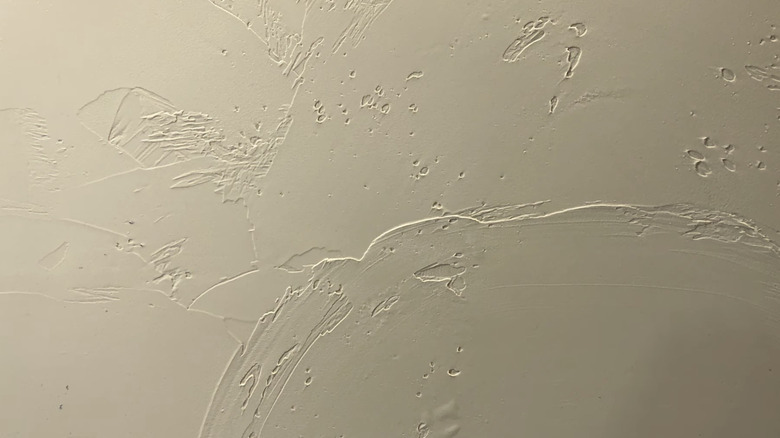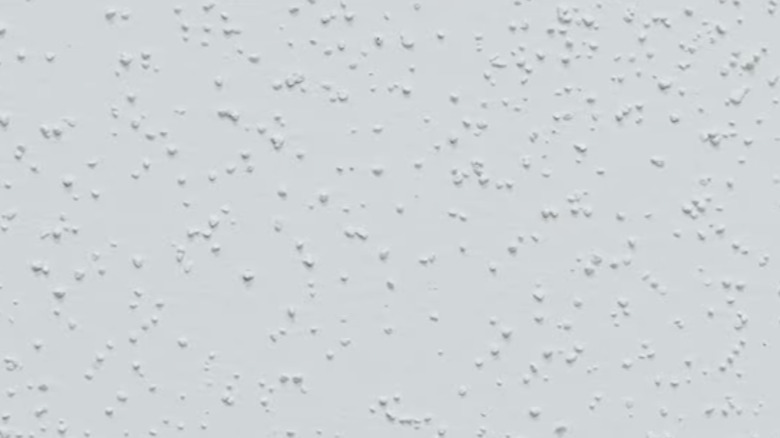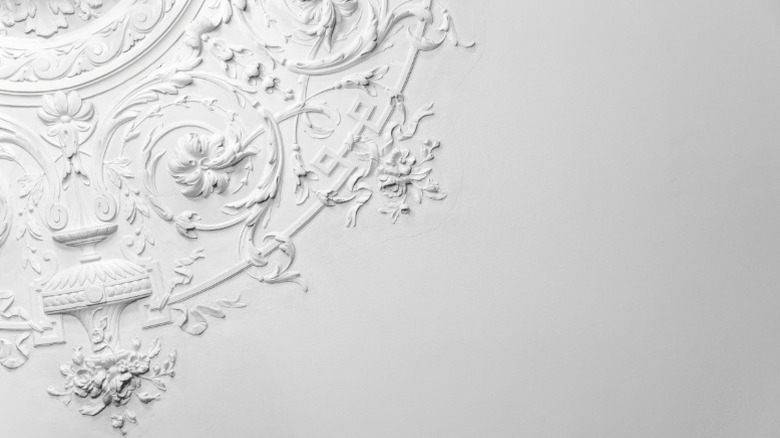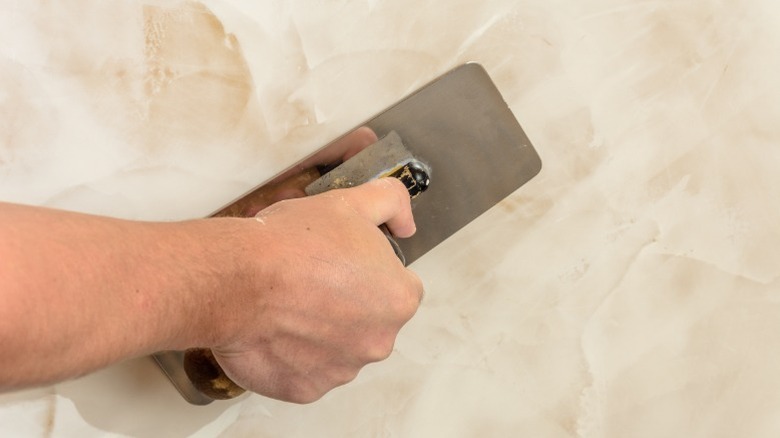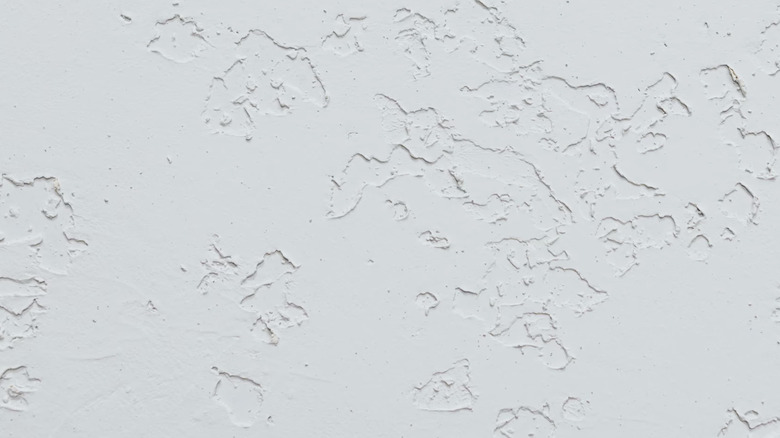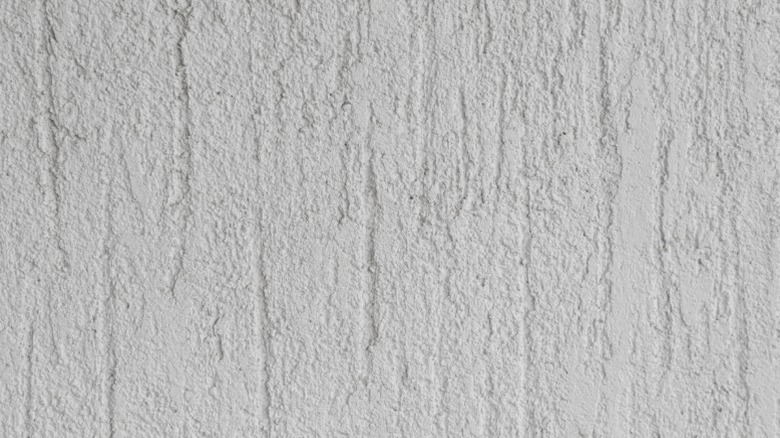Sick Of Your Popcorn Ceiling? Try These Other Textured Ceiling Styles For An Upgrade
We may receive a commission on purchases made from links.
The unique, textured look of a popcorn ceiling still graces the designs of many homes. Some homeowners embrace these ceilings, while others cringe when they see them. If you have a popcorn ceiling in your home that you cannot handle looking at anymore, you are not quite out of luck. You have some great options to upgrade your interior. One ways is to ditch your dated popcorn ceiling with a DIY tile ceiling. But if you genuinely like the look of a textured ceiling, your home might only require a little upgrade when it comes to the style. Consider utilizing a different technique that will transform the textured look of your popcorn ceilings from dated to intentional.
While popcorn ceilings remain one of the most recognized, textured ceilings are any surface that is not totally smooth. Textured ceiling styles vary from minimal texture options, like orange peel or stipple, to more detailed looks, like comb or bas-relief texture. Beyond the way they can transform the look and mood of your interior spaces, textured ceilings have other benefits. From noise reduction to disguising imperfections, textured ceilings add value to your home in different ways, and there are many options to pick from that are not the stale popcorn ceiling pattern.
Discover the bold look of a knockdown ceiling
Despite its name, a knockdown ceiling does not involve anybody "knocking down" any part of your ceiling or walls. A knockdown ceiling features a rustic, stucco-like texture and it gets its unique name from the method used to create the look. Knockdown ceilings hide imperfections and flaws better than a smooth finish. You can try to DIY this type of textured style using the right tools, including a drywall knife, to flatten the peaks created by adding drywall mud to your ceiling and tapping it with a sponge or brush.
Give your ceiling orange peel texture for a classic style
It's a popcorn ceiling alternative that adds a unique, citrusy texture to your space, but thankfully it doesn't need to be the color orange. Orange peel texture resembles the outside skin of an orange, typically showcasing little pits and bumps for a soft, minimalist texture. A main benefit of this texture compared to popcorn ceilings is how easy it is to clean it. This textured style can be achieved by using a sprayer to apply a thin layer of drywall mud.
Choose a symmetrically-patterned texture like the fan style
Adding a textured design to your ceiling can be simple with the right tools. The fan style is created by taking a comb-like tool and carefully moving it through drywall mud. Sometimes called comb or fish scale texture, depending on the design created, the finished result may showcase very regular half-circle patterns or more haphazard arches or waves. Overlapping shapes add a sense of peaceful movement, similar to the raked sand of a Zen garden.
Add a little swirl for personality on your ceilings
A swirl texture can take several forms, from bold, rough shapes to a slightly raised look. Looking up at the ceiling, you should be able to pick out individual circle shapes with a little bit of whirled look at the center. This type of textured style is not the easiest for home improvement amateurs to accomplish. The placement of each swirled circle needs to be precise to avoid unevenness. It's also possible to mix fine sand into your mixture before crafting swirl designs to create a slightly grainy, more durable, effect.
Subtle style with an abstract rosebud ceiling pattern
A special type of brush can be used to create a floral-like texture in your ceiling, called a rosebud. This brush is usually a round style of stomp brush which is pressed lightly into drywall mud to form the pattern. This textured style requires a regular, evenly-spaced placement to truly highlight the look of the petals surrounding a center bud. Successfully creating a rosebud style is dependent on a thin drywall mud mixture.
Provide a textured slap brush look with no extra labor
Slap brush texture sometimes is mistaken for the knockdown technique, but the difference between slap brush walls and knockdown walls is the slightly raised ridges of slap brush texture. Sometimes also referred to as crow's foot texture, slap brush ceilings are characterized by bold ridges forming thin lines. At times they might resemble the look of a crow stepping in your drywall mud before it dries. Form the design easily with a special brush that you slap against the ceiling to add the lines at random.
Give your home a layered with hawk and trowel texture
Customize the texture of your ceiling by using hawk and trowel tools to spread drywall mud. No two hawk and trowel ceilings look exactly the same and will depend on the technique used. A hawk is a flat tool that holds the mud, while a trowel is a tool used to apply and shape it. The transfer of mud between the hawk, the trowel, and the wall can be messy. The resulting style of a professional hawk and trowel ceiling is always homey, but can be either soft or dramatic.
Highlight your home's natural beauty with the Santa Fe style
Unlike some ceiling textures, Santa Fe intentionally only covers part of the surface area. The uneven application of drywall mud gives it a pleasant and natural look with more depth than an untextured ceiling. Classic Santa Fe style calls for 60% to 90% coverage, so you can alter the coverage area based on preference. Lighter coverage can be more modern, while heavier is great for rustic interiors. Ultimately, it's a nice way to add intentional detail to your home.
Add spray sand ceilings for a neat pop of texture
Instead of the loud and bold dots found in a popcorn ceiling, a spray sand ceiling has a smaller, finer look. The tiny bits of sand in this type of textured ceiling give it just the right amount of pop. Easier than options that require the application and manipulation of drywall mud, accomplishing this style only requires a hopper gun or sprayer tool. Its gritty texture is the product of fine sand mixed with thin drywall mud or primer. While similar to orange peel ceilings, it typically has more durability.
Grace your spaces with a versatile, artistic skip trowel look
Unlike popcorn ceilings, a skip trowel ceiling offers a more premium touch to your interior. To start, put a layer of drywall mud down. Instead of smoothing it out completely or pressing on it with a brush, a trowel is used in a light skipping motion across the surface. It can be tricky to do right, because the goal is to create irregular texture by holding the trowel at a slight angle, but it's one of the best ceiling textures to reduce noise in your house.
Introduce ornate art via your ceiling with bas-relief
For over hundreds of years, bas-relief sculpture and art has graced the walls and ceilings of the finest interiors in the world. Perhaps the most unique and open-ended methods for putting texture on your ceiling that is not popcorn, bas-relief style involves creating clear, 3D raised patterns and shapes in the ceiling. The only limit is your imagination, but you likely would never attempt this on your own. Carving ornate flowers and traditional flourishes into your ceiling can be time-consuming and labor-intensive. Modern instances use either plaster or joint compound.
Elevate your interior with a polished Venetian look
Not for the casual DIYer, a Venetian ceiling texture involves applying thin layers of plaster to your ceiling and then sanding or polishing them for a clean and shiny look. Instead of using drywall mud to create this textured style, you will need slaked lime plaster and a wax finish. This time-consuming process requires that you pause and smooth each layer before adding another one. If done correctly, the subtle textural flow of the plaster layers is both elegant and timeless.
Easily create the tiny dots for a stipple ceiling
An uncomplicated ceiling texture, the stipple effect also creates raised dots similar to popcorn ceilings. However, these are smaller, finer, and made using a special stipple brush pressed into wet drywall compound. Stippling can also be accomplished with a roller with a stipple pattern. Be aware that these little dots make cleaning this textured ceiling a pain, because dust gets trapped in the little cavities. However, it can be one of the easier options for adding texture to your ceilings without a professional.
Add a demanding, yet delicate texture like hand brocade
While hand brocade can be lumped under knockdown texture, this style has some subtle differences. If you compare the two types, hand brocade texture will have more depth. The final step of creating this texture on your ceilings is the "knockdown" stage. However, you start the process by applying multiple layers of drywall compound using some type of tool. A little bit of creativity will go a long way with a hand brocade ceiling. Random pits and peaks will give the final look one of elegant and rich brocade fabric.
Opt for a natural tree bark pattern
If sophistication and contemporary style matter to you for your interiors, a natural tree bark pattern might do the trick with its vertical lines. This textured ceiling style is the opposite of a popcorn ceiling. Instead of large bumps, it features clean lines like real tree bark. The easiest option for creating a tree bark ceiling texture in your home is to use a specially designed roller like this Tree Bark Pattern Texture Roller. When rolling texture onto your ceiling, make sure to press firmly and decide your placement before you get started.
